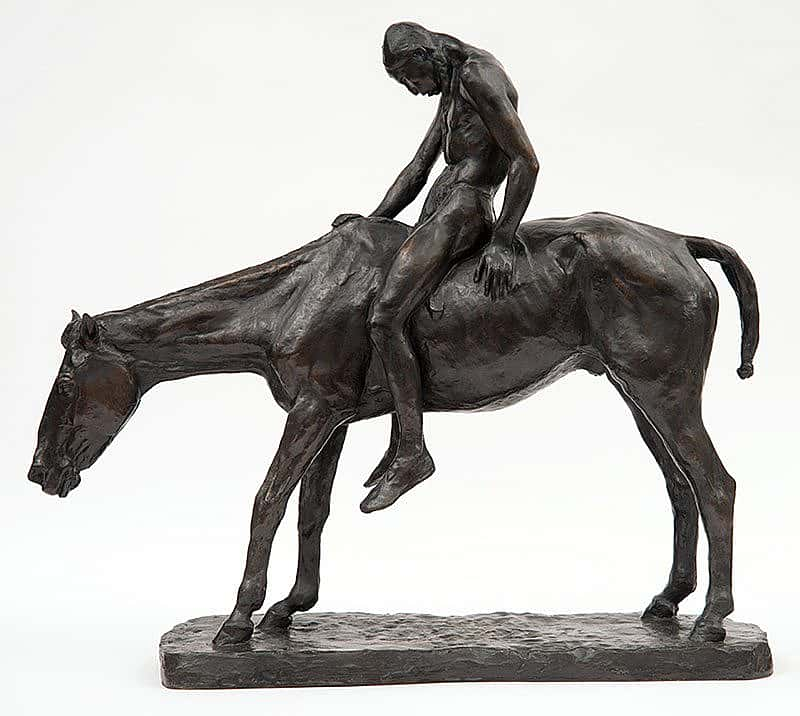Treasures from Our West: “Dying Indian” by Charles Cary Rumsey
Originally featured in Points West magazine in Summer 2013
Charles Cary Rumsey’s Dying Indian portrays a slouched Native American male atop a starving pony. The subject matter may seem familiar because it is similar to James Earl Fraser’s iconic End of the Trail. Rumsey’s depiction, however, stands in contrast to Fraser’s idealized figure and horse. Rumsey conveys immediacy and dramatic power through quick modeling and a lack of surface detail to further emphasize the symbolic plight of the defeated warrior.
Like Fraser, Rumsey studied sculpture in Paris and was exposed to the work of the great American sculptor, Augustus Saint-Gaudens. Rumsey’s art, however, represents an early example of the shift in American sculpture—away from realism and classic idealizing tendencies, and more toward concerns of abstract foundations of art—design, composition, and focus on emotion.
In his brief career (his life was cut tragically short in an automobile accident), Rumsey created a rich variety of sculpture. He created numerous small bronzes of horses, buffalo, and other animals; many studies of the human figure; and a multitude of polo players and horse and rider groupings. Rumsey’s monumental public sculptures appear throughout his hometown of Buffalo, New York; his Buffalo Hunt frieze marks the New York City entrance of the Manhattan Bridge; and a monumental version of Dying Indian now rests in the Brooklyn Botanical Gardens.
Charles Cary Rumsey (1879 – 1922). Dying Indian, ca. 1904. Bronze, 27 1/2 x 30 1/4 x 8 1/4 inches. Gift of Mr. and Mrs. Charles Rumsey. 1.13
Post 157
Written By
Nancy McClure
Nancy now does Grants & Foundations Relations for the Center of the West's Development Department, but was formerly the Content Producer for the Center's Public Relations Department, where her work included writing and updating website content, publicizing events, copy editing, working with images, and producing the e-newsletter Western Wire. Her current job is seeking and applying for funding from government grants and private foundations. In her spare time, Nancy enjoys photography, reading, flower gardening, and playing the flute.

